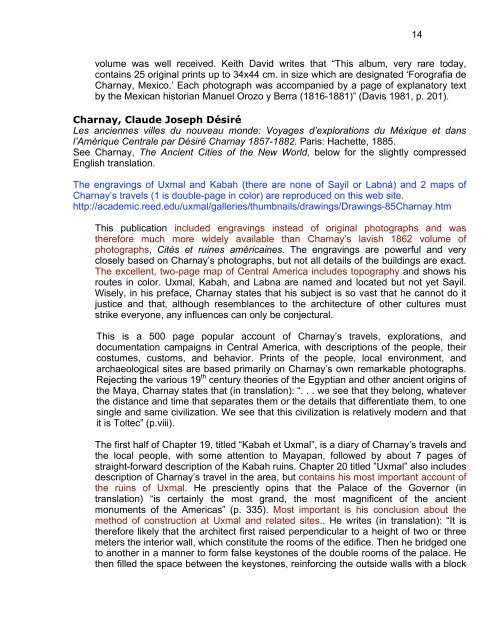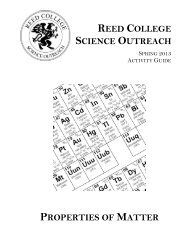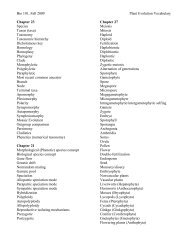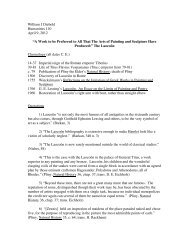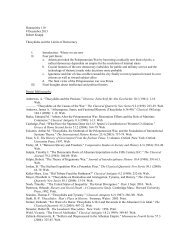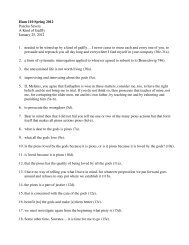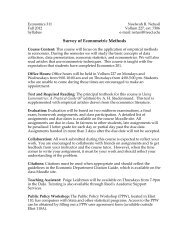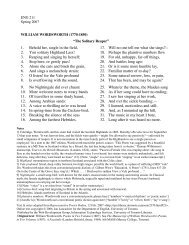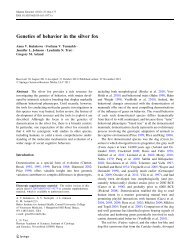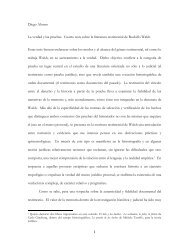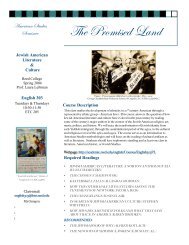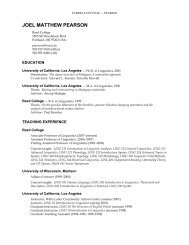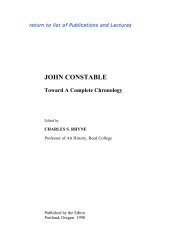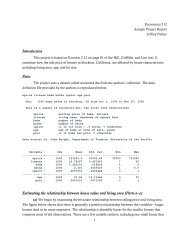Graphic and Photographic Documentation - Reed College
Graphic and Photographic Documentation - Reed College
Graphic and Photographic Documentation - Reed College
Create successful ePaper yourself
Turn your PDF publications into a flip-book with our unique Google optimized e-Paper software.
volume was well received. Keith David writes that “This album, very rare today,<br />
contains 25 original prints up to 34x44 cm. in size which are designated ‘Forografia de<br />
Charnay, Mexico.’ Each photograph was accompanied by a page of explanatory text<br />
by the Mexican historian Manuel Orozo y Berra (1816-1881)” (Davis 1981, p. 201).<br />
Charnay, Claude Joseph Désiré<br />
Les anciennes villes du nouveau monde: Voyages d’explorations du Méxique et dans<br />
l’Amérique Centrale par Désiré Charnay 1857-1882. Paris: Hachette, 1885.<br />
See Charnay, The Ancient Cities of the New World, below for the slightly compressed<br />
English translation.<br />
The engravings of Uxmal <strong>and</strong> Kabah (there are none of Sayil or Labná) <strong>and</strong> 2 maps of<br />
Charnay’s travels (1 is double-page in color) are reproduced on this web site.<br />
http://academic.reed.edu/uxmal/galleries/thumbnails/drawings/Drawings-85Charnay.htm<br />
This publication included engravings instead of original photographs <strong>and</strong> was<br />
therefore much more widely available than Charnay’s lavish 1862 volume of<br />
photographs, Cités et ruines américaines. The engravings are powerful <strong>and</strong> very<br />
closely based on Charnay’s photographs, but not all details of the buildings are exact.<br />
The excellent, two-page map of Central America includes topography <strong>and</strong> shows his<br />
routes in color. Uxmal, Kabah, <strong>and</strong> Labna are named <strong>and</strong> located but not yet Sayil.<br />
Wisely, in his preface, Charnay states that his subject is so vast that he cannot do it<br />
justice <strong>and</strong> that, although resemblances to the architecture of other cultures must<br />
strike everyone, any influences can only be conjectural.<br />
This is a 500 page popular account of Charnay’s travels, explorations, <strong>and</strong><br />
documentation campaigns in Central America, with descriptions of the people, their<br />
costumes, customs, <strong>and</strong> behavior. Prints of the people, local environment, <strong>and</strong><br />
archaeological sites are based primarily on Charnay’s own remarkable photographs.<br />
Rejecting the various 19 th century theories of the Egyptian <strong>and</strong> other ancient origins of<br />
the Maya, Charnay states that (in translation): “. . . we see that they belong, whatever<br />
the distance <strong>and</strong> time that separates them or the details that differentiate them, to one<br />
single <strong>and</strong> same civilization. We see that this civilization is relatively modern <strong>and</strong> that<br />
it is Toltec” (p.viii).<br />
The first half of Chapter 19, titled “Kabah et Uxmal”, is a diary of Charnay’s travels <strong>and</strong><br />
the local people, with some attention to Mayapan, followed by about 7 pages of<br />
straight-forward description of the Kabah ruins. Chapter 20 titled ”Uxmal” also includes<br />
description of Charnay’s travel in the area, but contains his most important account of<br />
the ruins of Uxmal. He presciently opins that the Palace of the Governor (in<br />
translation) “is certainly the most gr<strong>and</strong>, the most magnificent of the ancient<br />
monuments of the Americas” (p. 335). Most important is his conclusion about the<br />
method of construction at Uxmal <strong>and</strong> related sites.. He writes (in translation): “It is<br />
therefore likely that the architect first raised perpendicular to a height of two or three<br />
meters the interior wall, which constitute the rooms of the edifice. Then he bridged one<br />
to another in a manner to form false keystones of the double rooms of the palace. He<br />
then filled the space between the keystones, reinforcing the outside walls with a block<br />
14


